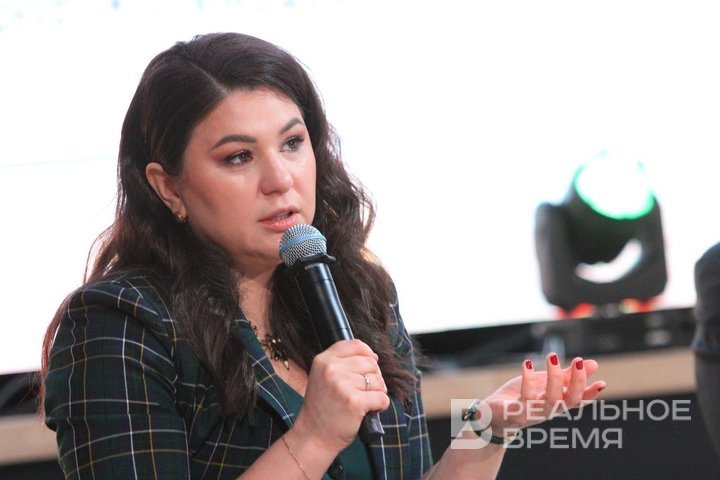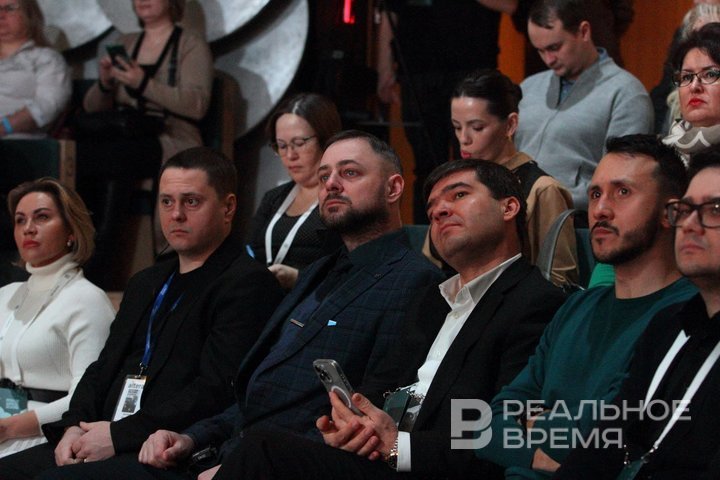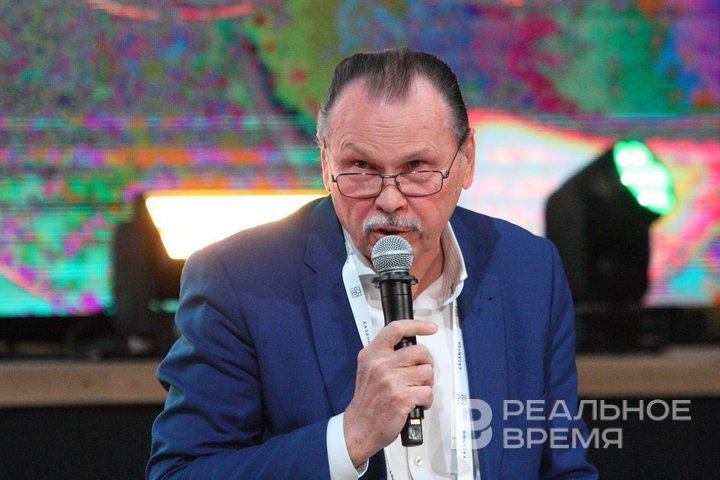Gil Peñalosa: ‘A Muscovite will not tell you how to live in Tatarstan’
World urban development experts advise residents of the republic to decide for themselves what their cities will be like

“What kind of Tatarstan do you want to see in 10-20 years? This is important!” Gil Peñalosa, one of the most influential urbanists in the world, addressed the audience in Kazan. Speaking at Kazanysh International Forum, he and other speakers at the session discussed how to increase the investment attractiveness of the republic through effective urban development policies. Head of the Investment Development Agency (TIDA) of the Republic of Tatarstan Taliya Minullina cited the successful experience of other megacities. Read about what Copenhagen, Melbourne or Tokyo have in common with the cities of Tatarstan and what is still missing in a report of Realnoe Vremya.
An investor will not invest in a territory he does not know
Tatarstan received over a trillion rubles of extra-budgetary investments for the first time last year. This record figure is largely due to the effectiveness of urban development policy, emphasized the moderator of the meeting, head of the Investment Development Agency of the Republic of Tatarstan Taliya Minullina:
“It is important that an investor, when making a decision, will never invest in a territory he does not know. First, he needs to find out what kind of city or what kind of republic or country it is. Often, those cities that do not have strong, powerful brands are not as good at attracting investors as well-known and famous ones.”
The second important point is the comprehensive development of territories in the city where the investor comes. “If there is no market, the right critical mass on which he will make his capital, of course, he will also refuse to invest,” the head of the Investment Development Agency is convinced. According to her, it is important to rationally place objects on the territory, including for the purpose of increasing their capitalisation:
“All this leads us to the fact that working with investments is an important story of urban development policy. Today, its postulates are comprehensive planning of infrastructure development, ecology, innovation, and the creation of growth points.”

How to make money on parks and garbage
She cited several successfully developing megacities as an example. In Singapore, there is a project for a successful synthesis of commercial and public development with large park routes 150 km long. Copenhagen, with its developed transport network and bicycle traffic, is a leader in the field of sustainable urban mobility — 600 km of green routes have been created here, calculating that the cost of a kilometre of bike path pays off in five years due to reduced costs for healthcare, road maintenance, and improved ecology. “That is, there is already economic evidence that green transport is more profitable than conventional transport.” In Australia, there is a private fund for sustainable development in Melbourne.
“We often say that this is a government issue, a lot of government investment is needed there. But there is a private fund that has learned to make money on this. This city is already switching to 100% renewable energy sources for municipal needs. They have 10-megawatt solar power plants that supply energy to the tram network,” the speaker stressed.
The next example is Stockholm, where a third of the territory is green space, and the goal is to become the first carbon-neutral city by 2040. One of its districts already receives 40% of its energy from waste recycling. In Tokyo, where the transport system is very complex and developed, AI technologies are used in its management. All these examples demonstrate how cities can successfully integrate environmental practices into their planning and create a favourable environment for residents.

“No consultant in the world will tell you what Tatarstan should be like”
Tatarstan is not yet included in the world's textbooks on economic development, but will make efforts to appear there, the head of the TIDA assured. Today, Tatarstan attracts investors with a good balance of interethnic and interfaith harmony, which is also important for investment security. The presence of historical territories, including UNESCO sites, as well as innovative cities and new spaces.
“A city is also about diversity and the ability to choose for everyone. If there is no choice, then it is no longer an investment-attractive territory. Modern cities are no longer positioned as just territories. These are ecosystems where thoughtful planning together with technology ensures very serious economic growth. And most importantly, it leads to quality of life,” the moderator of the meeting emphasised.
According to her, it is important for Tatarstan to pave its own development path, relying on world experience — not copying, but adapting it and introducing something new.
This idea was developed by Gil Penalosa (Canada/Colombia), a world expert in the creation of public spaces, President of Gil Penalosa & Associates, Chairman of the Institute for Sustainable Urban Development Norman Foster. He is ranked 24th on the list of the most influential urbanists according to Planetizen independent community in 2023. He gained worldwide fame after implementing a programme to create and develop more than 200 parks in Bogota, improving parks and modernizing the urban environment in cities in Europe and America. The speaker formulated three main ideas that influence the investment attractiveness of cities, and gave recommendations on how Tatarstan can develop.
“How do you want to live? This is the main question, the most important one. If you want children to go to school, you need to build more schools. What kind of future do you want Tatarstan to be? No consultant in the world will tell you this. A Muscovite will not tell you how to live in Tatarstan. What kind of future do you want Tatarstan to be in 10-20 years? This is important!” he highlighted.

“We need cities for everyone: from 8 to 80, from zero to 100”
The second important factor for the development of the city is the mobility of its population, the expert believes. Here, the priority will be the creation of conditions for walking and cycling. In second place is the development of public transport, and only then cars. According to the speaker, the problem with traffic jams on the roads can be solved by establishing different work schedules: if part of the population leaves for work by 8.00 in the morning, and the other — by 11.00:
“The only way to solve the problem of traffic jams is to reduce the use of private cars so that all your basic needs are covered within a 15-minute walk — to work, to the store.”
The guest touched on another aspect — personnel. Low unemployment is both good and bad for the city. When creating new companies, developing industries, there is a shortage of specialists. But the problem can be solved by attracting teenagers to work part-time or disabled people, adapting jobs for them.
“As far as I know, the retirement age is quite low now. That is, people can work for another 5-10 years. In other countries, people retire 10 years later than in Tatarstan. They can take these jobs,” Gil Peñalosa pointed out.
The city should be attractive to everyone, he noted. In Tatarstan, he liked the “beautiful, wonderful parks.” Various festivals can increase urban activity. It is important to make the metropolis accessible and interesting for everyone, the expert added: “We need to stop building cities that are only suitable for thirty-year-olds. We need cities for everyone: from eight to 80, from zero to 100.” By building a city where all people live a happy, healthy life, you will also attract investment, he concluded.

“If we don't switch to public transport, the city won't move”
A balanced approach to urban development policy is the cornerstone of successful urban development, noted the next speaker, Oleg Grigoriev, director of the Institute of Spatial Planning of the Republic of Tatarstan. He spoke about the international experience used in the plans for the development of Tatarstan and how the interests of private investors are taken into account. He dwelt in detail on the issues of developing master plans for the Kazan and Kama agglomerations, returning to the topic of the transport problem of cities:
“Almost 90,000 people move from the suburbs to Kazan every morning for work and other purposes — this is morning traffic. Like many institutes, we use all sorts of models in our work. First of all, the transport model, which is dedicated, among other things, to public transport. As we can see from this model, if we don't switch to public transport, don't increase the percentage of its use to at least 65%, the city won't move, and traffic jams will be ineradicable, no matter what transport solutions we use.”
Another model helps to solve the issue of balanced population distribution: places of residence and places of employment. If successfully implemented, Kazan will be able to achieve if not 15-minute, then at least 20-minute walking distance for each resident. Oleg Grigoriev also spoke about working with general plans of cities.

“We diligently prepare, allocate sites that can only be developed as production or public sites. Sometimes we mercilessly kill territories that are designated for development in the current documents, where, according to our calculations, it is unacceptable or acceptable in a much smaller volume,” he believes.
In this case, the institute has to make changes to the urban planning documentation on many positions, pursuing the same goal — balanced development of the city.
During the session, other speakers expressed similar thoughts, citing examples of sustainable growth of megacities and increased investment attractiveness.